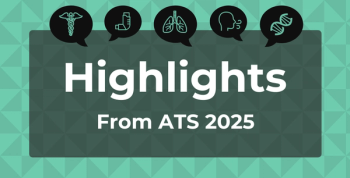
Abstracts Outline Costs of Heart Health in US, Benefits of Protective Measures
New research presented at the American College of Cardiology's 71st Annual Scientific Session & Expo highlights the high costs of heart failure in the United States and the benefits of healthy eating and exercise as preventive measures.
A series of abstracts presented at ACC.22, the 71st Annual Scientific Session & Expo hosted by the
The High Costs of Heart Failure
Using data from 16,516 patients who received an incident heart failure (HF) diagnosis and an echocardiogram between 2005 and 2017 at Kaiser Permanente Northwest, researchers assessed medical costs associated with HF with reduced ejection fraction (HFrEF; <40%), mildly reduced EF (HFmrEF; 41-49%), or preserved EF (HFpEF; > 50%).1
Although the economic burden of HF has been previously studied, many analyses consider the disease a single entity, creating a knowledge gap with regard to individual HF types, the researchers explained.
Investigators calculated annual inpatient, outpatient, emergency, pharmaceutical, and total costs for each HF type and converted sums into 2020 dollars. Totals were also adjusted for age and sex.
Of the patients analyzed, 2430 (14.7%) had HFrEF, 1646 (10%) had HFmrEF, and 12,440 (75.3%) had HFpEF. Because of their higher prevalence, patients with HFpEF accounted for the majority of HF costs.
However, “on a per-person basis, age/sex adjusted annualized costs, were higher among HFpEF for all resource types compared with the other 2 groups, but especially for outpatient care and pharmaceuticals.”
Each patient with HFpEF accrued $10,544 for outpatient care compared with $8861 per patient with HFmrEF and $7978 per patient with HFrEF. Per patient pharmaceutical costs were $4844, $3327, and $3345, respectively.
“Costs of care for individual patients with HFpEF are not only higher than for HFrEF, but they also represent a greater proportion of all costs for incident HF patients. Therapies designed to reduce the personal and societal burden of HFpEF are urgently needed,” the authors concluded.
In an additional analysis researchers investigated coverage and out-of-pocket (OOP) costs for quadruple and triple therapy combinations for patients with HFrEF, as based on recent clinical trials and ACC and American Hospital Association guidelines.2
Quadruple therapy consists of a beta blocker (BB), angiotensin receptor-neprilysin inhibitor (ARNI), mineralocorticoid receptor antagonist (MRA), and sodium-glucose contransporter-2 inhibitor (SGLT2i).
Patients enrolled in 4068 Medicare prescription drug plans available in the second quarter of 2020 were included in the evaluation, while the researchers assessed restricted coverage via tier ≥3 cost-sharing and prior authorization.
Analyses revealed:
- Of the plans, 4065 (99.9%) provided coverage for quadruple therapy with ARNIs and SGLT2is
- Tier ≥3 cost-sharing was present in 99.1% of all plans for ARNIs and 98.5% for at least 1 SGLT2i
- 24.3% of plans required prior authorization for an ARNI
- Median 30-day OOP cost of quadruple therapy during the standard coverage period was $94
- Median annual OOP cost of quadruple therapy based on standard benefit coverage was $2241 compared with $1319 when excluding SGLT2i usage and $200 when using BBs, MRAs, and ACE inhibitors instead of ARNIs
“Though Medicare prescription drug plans cover quadruple therapy for HFrEF, OOP costs for regimens with ARNi and SGLT2i are significantly higher than generic regimens,” the authors concluded,.
They added that “despite the clinical benefit of quadruple therapy, it may be unaffordable for most patients with HFrEF unless medication prices and cost-sharing are reduced.”
Protective Effects of Diet, Exercise
It’s no secret that eating healthier and exercising can improve one’s physical health. However, experts presenting at ACC.22 sought to quantify these benefits.
In one analysis, researchers conducted a meta-analysis of nonrandomized studies to better elucidate the effects of a high-potassium diet on cardiovascular mortality. To do so, they searched Medline, Web of Science, and the Cochrane Central Register of Controlled Trials to identify relevant studies.3
Four observational studies and 1 randomized trial were included in the final meta-analysis, which consisted of 70,210 patients. Comparison of those on high-potassium diets and individuals on a low-potassium diet revealed a statistically significant decrease in cardiovascular mortality risk favoring patients on a high-potassium diet (risk ratio, 0.86; 95% CI, 0.77-0.97), the authors wrote.
They cautioned the certainty of the estimate was low. Cardiovascular disease and high blood pressure, or hypertension, both contribute to an increased risk of HF.
One additional abstract presented at ACC.22 outlined the benefits of exercise among a cohort of 459,592 hypertensive US veterans. Researchers specifically assessed the association between exercise capacity and risk of developing atrial fibrillation (AF; an irregular heart rhythm that can lead to blood clots) in this population.4
All study participants had a hypertension diagnosis and a mean (SD) age of 63 (8.6) years. Females made up only 5% of the cohort, while all individuals completed a symptom-limited exercise treadmill test (ETT).
Fitness categories were based on age-specific mean (SD) peak metabolic equivalents (METs) achieved, defined as the following:
- Least-fit: 4.5 (1.22) METs (n = 107,593)
- Low-fit: 6.9 (1.07) METs (n = 119,433)
- Moderate-fit: 8.3 (1.19) METs (n = 88,923)
- Fit: 10.3 (0.89) METs (n = 106,921)
- High-fit: 13.1 (1.55) METs (n = 36,722)
Of the patients included, 33.5% were smokers, 43.6% had diabetes, 69.8% had dyslipidemia, and 5.8% had chronic kidney disease.
The median patient follow-up was 9.8 years, and within this window, 42,639 (9.6%) individuals developed AF (9.6 per 1000 person-years).
Adjusted analyses revealed:
- Exercise capacity was inversely related to AF incidence
- The risk was 11% lower (HR, 0.89; 95% CI, 0.88-0.90) for each 1-MET increase in exercise capacity
- Compared with individuals in the Least-fit category (reference), the HRs were 0.72 (95% CI, 0.71-0.74) for Low-fit individuals, 0.61 (95% CI, 0.60-0.63) for Moderate-fit, 0.52 (95% CI, 0.50-0.54) for Fit, and 0.45 (95% CI, 0.43-0.47) for High- fit individuals.
- Similar trends were observed in those younger than 65 years and those 65 years and older
Overall, an inverse, independent, and graded association was seen between increased fitness and AF protection.
“Significantly lower AF risk was evident in those with only modest increases in exercise capacity and declined by >50% for individuals in the High-fit category,” the researchers wrote.
“These findings counter previous suggestions that even moderate increases in physical activity, as recommended by national and international guidelines, increase the risk of AF,” they concluded.
References:
- Nichols GA, Qiao Q, Linden S, Kraus B. Medical costs among incident heart failure patients with reduced, mildly reduced, and preserved ejection fraction. Presented at: 71st Scientific Session of the American College of Cardiology; April 2-4; Washington, DC. Abstract 1077-09.
- Faridi K, Dayoub E, Ross JS, Dhruva SS, Desai NR. National Medicare formulary coverage and out-of-pocket costs of quadruple therapy for heart failure with reduced ejection fraction. Presented at: 71st Scientific Session of the American College of Cardiology; April 2-4; Washington, DC. Abstract 903-04.
- Siddiqui M, Pasha A, Kochar K, Junarta J, Fischman DL. Effect of high potanssium diet on cardiovascular mortality: a systematic review and meta-analysis. Presented at: 71st Scientific Session of the American College of Cardiology; April 2-4; Washington, DC. Abstract 1473-058.
- Pittaras AE, Faselis C, Samuel IBH, et al. Exercise capacity and atrtial fibrillation risk in 459,592 hypertensive US veterans: a cohort study. Presented at: 71st Scientific Session of the American College of Cardiology; April 2-4; Washington, DC.Abstract 1461-131.
Newsletter
Stay ahead of policy, cost, and value—subscribe to AJMC for expert insights at the intersection of clinical care and health economics.








































